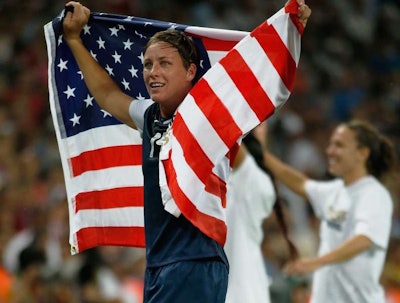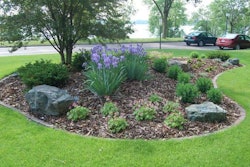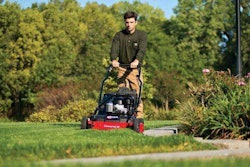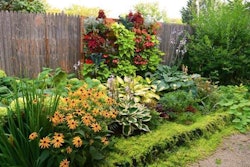 U.S. Women’s National Soccer Team co-captain Abby Wambach is speaking out on the benefits of natural grass vs. synthetic turf.
U.S. Women’s National Soccer Team co-captain Abby Wambach is speaking out on the benefits of natural grass vs. synthetic turf.Photo: RISE
The 2015 Women’s World Cup final match became the highest-rated and most-watched soccer game ever to air in the United States. Not only did it turn the world’s attention to women’s soccer, it also put a spotlight on a concern many people don’t think about: playing on artificial turf.
For Abby Wambach, co-captain of the World Cup Champion U.S. Women’s National Soccer Team, well-maintained grass under her soccer cleats isn’t a luxury. She believes it’s a necessity for playing aggressively and reducing the risk of injury. Wambach’s appreciation for playing on grass has been front and center since the International Federation of Association Football (FIFA) announced last year that the Women’s World Cup games would be fielded on artificial turf.
“There is nothing better than playing the sport I love on a real grass field,” Wambach says. “The ball moves quickly and I’m required to react fast and with precision. Real, well-maintained grass helps me anticipate the ball’s movement and feel better about going all-out.”
Wambach’s appreciation for playing on grass led her to partner with RISE to raise awareness about the value of real grass fields and the products and processes needed to care for them. RISE, or “Responsible Industry for a Sound Environment,” is a trade association representing producers and suppliers of various types of pesticides and fertilizers used in residential areas.
As part of her new partnership with the organization, Wambach conducted interviews from New Jersey Red Bull Arena on July 29, helping to reinforce the association’s promotion of natural turf. “Soccer is a great foundational sport and I want kids to someday be able to experience everything I have,” Wambach said. “That all starts with a natural, healthy playing field.”
A RISE spokeswoman adds: “Abby’s media interviews and the content shared through social media highlight her professional athlete’s perspective, though the benefits she describes are well known to athletes, parents and communities across the country.”
During the interviews, Wambach told athletes and parents of athletes to think about the following elements before stepping on a playing field:
- Natural turf is the optimal playing surface: Natural turf provides athletes with an optimal playing surface – real grass. Practice and competition on natural grass creates softer, and up to 40 degrees cooler, fields with less risk of knee and ankle injuries and skin abrasions.
- Turf care is an integrated game plan: The best playing fields showcase the results of an integrated pest management (IPM) approach to managing weeds, insects and diseases that harm grass. Well-maintained grass offers thick, reliable play; otherwise, grass can become patchy with weeds or dirt, creating tripping and other hazards.
- Groundskeepers need a complete toolbox: Professional groundskeepers and sports turf managers need access to effective pesticide and fertilizer products that help keep grass healthy. Turf managers use these products judiciously to solve or prevent specific problems.
- Natural turf is personal: Natural grass fields vary with region, soil type, weather patterns, field use and more. The approach for all fields should be specific to those conditions to keep the field in great playing shape. With proper maintenance, natural grass fields do not have a fixed life and can be used for more than 20 years without replacement.









